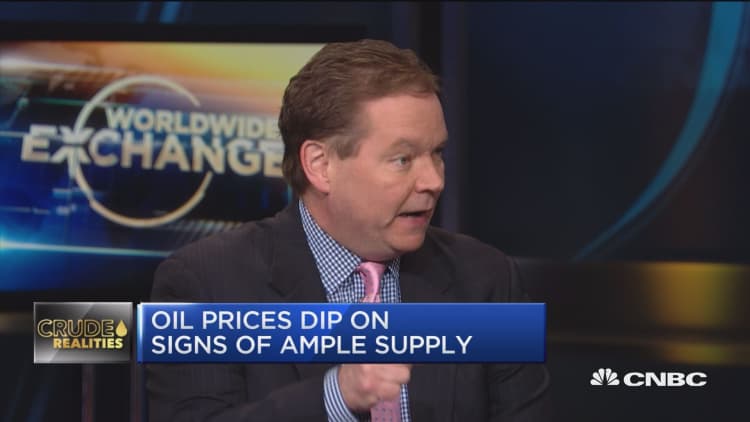Oil prices ticked higher on Wednesday after a U.S. crude inventory report showed domestic crude stocks falling more than expected.
Brent crude futures were up 87 cents, or 1.1 percent, at $79.30 per barrel by 2:29 p.m. ET. U.S. West Texas Intermediate (WTI) crude futures rose 22 cents to $71.53 a barrel, down 19 cents.
U.S. crude stocks fell last week as exports hit a new one-week record, while inventories of both gasoline and distillates fell, the Energy Information Administration said.
Crude inventories fell by 1.4 million barrels in the week to May 11, compared with analysts' expectations for a decrease of 763,000 barrels.
"All in all, the report is bullish. Oil stocks fell across the board and in some cases more than expected, whilst rising exports point to healthy demand for U.S. crude," Commerzbank analyst Carsten Fritsch said.

The dollar firmed to nearly a five-month high against a basket of other major currencies on Wednesday. A stronger greenback makes it more expensive to buy dollar-denominated commodities like oil.
"The only reason why we're not seeing higher prices from here today is the strength of the U.S. dollar," said Tariq Zahir, managing member at Tyche Capital Advisors.
Physical crude markets are sagging under the weight of unsold barrels of oil, while the 50-percent rise in the oil price in the last year is encouraging major companies such as ExxonMobil, Royal Dutch Shell, Chevron, BP and Total.
"Aggregate production — both actual and projected — is growing for the majors," S&P Global Ratings said in a report published on Tuesday.
Spot crude oil cargo prices are at their steepest discounts to futures prices in years as sellers are struggling to find buyers for West African, Russian and Kazakh cargoes, while pipeline bottlenecks trap supply in west Texas and Canada.
With renewed U.S. sanctions looming against OPEC-member Iran and oil demand strong, analysts said crude markets will likely remain tight for much of the year.
Stronger oil prices are also spilling into other markets.

"A rising oil price brings upside price risk to all commodities," Morgan Stanley said in a note this week.
The International Energy Agency on Wednesday warned global demand is likely to moderate this year, as the price of crude nears $80 a barrel and many key importing nations no longer offer consumers generous fuel subsidies.
In its monthly report, the Paris-based IEA cut its forecast for global demand growth to 1.4 million barrels per day for 2018, from a previous estimate of 1.5 million bpd.
"On balance, the report is tending more to the negative side. Demand for oil has been revised downwards for the second half of the year from April," PVM Oil Associates strategist Tamas Varga said.

